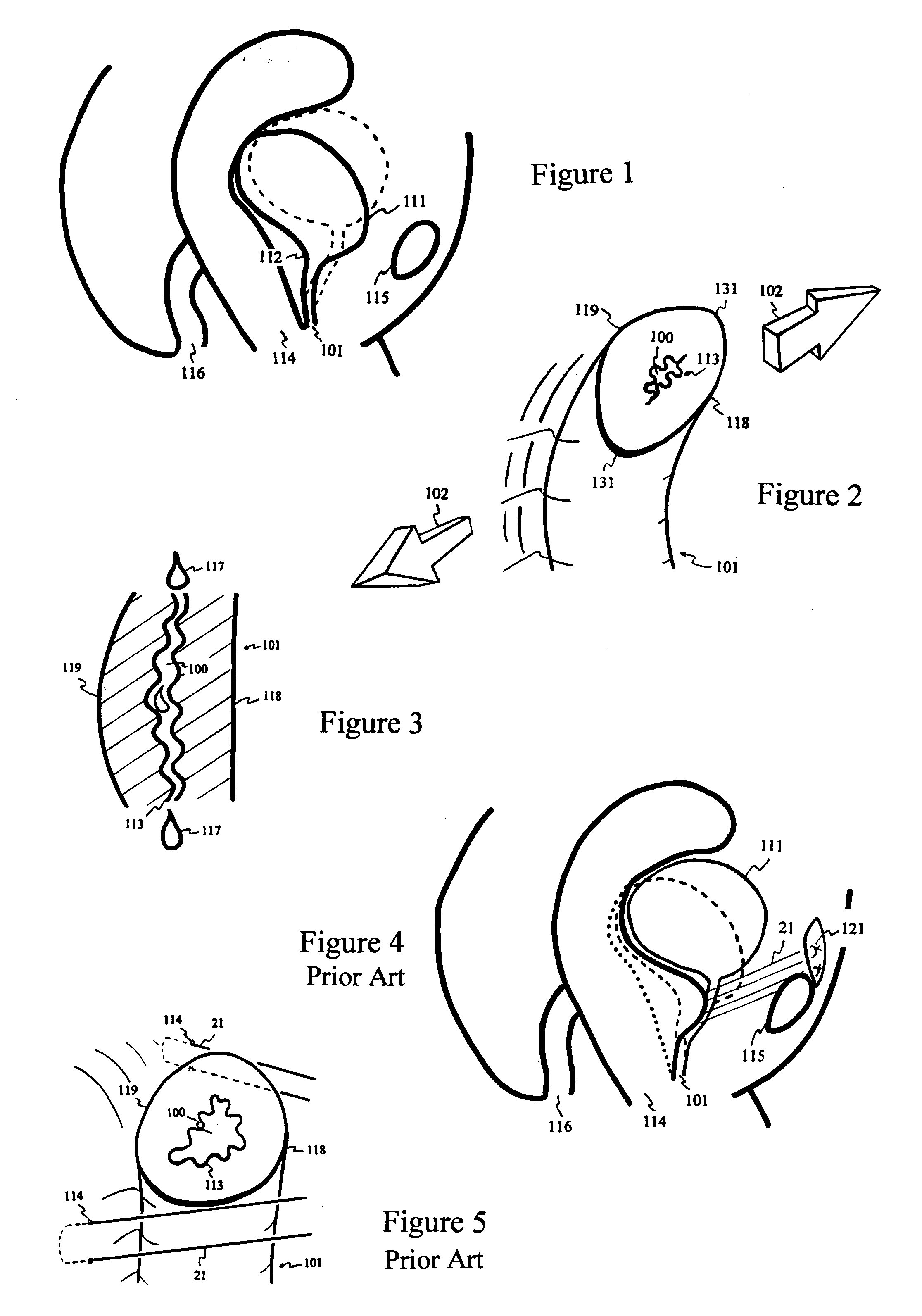Urethral muscle controlled micro-invasive sphincteric closure device
a urethral muscle and micro-invasive technology, applied in the field of urethral muscle controlled micro-invasive sphincteric closure devices, can solve the problems of inconvenient use, high indirect cost, and high indirect cost, and achieve the effect of reducing device migration
- Summary
- Abstract
- Description
- Claims
- Application Information
AI Technical Summary
Benefits of technology
Problems solved by technology
Method used
Image
Examples
Embodiment Construction
[0133] It is widely believed that most of the urinary incontinence in women is related to the descended position of the bladder 111, the funnneling of the bladder neck 112 and / or diminishing posterior 119 urethral support. The dashed line of FIG. 1 indicates the normal position and the solid line depicts the descended position of the bladder 111 with its funnel-shaped bladder neck 112. FIG. 2 shows a failed lumen 100 closure and hypermobility under stress with the urethropelvic ligament 102 pulling the lateral walls 131 of the poorly supported urethra 101. The mid-longitudinal view of FIG. 2 during stress is shown in FIG. 3, with urethropelvic ligaments pulling perpendicularly above and below the plane of the page. A section of poorly-supported posterior wall 119 withdraws from mucosal 113 coaptation, leading to urine 117 leakage.
[0134] Numerous prior art surgical procedures are designed to treat urinary incontinence. The traditional surgical treatment for urinary incontinence is to...
PUM
 Login to View More
Login to View More Abstract
Description
Claims
Application Information
 Login to View More
Login to View More - R&D
- Intellectual Property
- Life Sciences
- Materials
- Tech Scout
- Unparalleled Data Quality
- Higher Quality Content
- 60% Fewer Hallucinations
Browse by: Latest US Patents, China's latest patents, Technical Efficacy Thesaurus, Application Domain, Technology Topic, Popular Technical Reports.
© 2025 PatSnap. All rights reserved.Legal|Privacy policy|Modern Slavery Act Transparency Statement|Sitemap|About US| Contact US: help@patsnap.com



